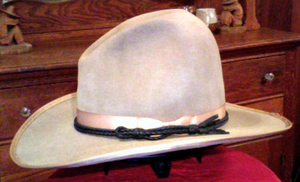The first person in the western world to attempt to measure intelligence was a man by the name of Francis Galton, who made his attempt in the late 1800s. Galton attempted to measure intelligence by measuring reaction times, head size, visual acuity, and color sense (Romero, Kemp, 2007). While now we know that these things do not truly measure intelligence, Galton’s attempt made history and the goal of assessing intelligence was set.
Testing more in line with modern standards were developed by Alfred Binet, a Frenchmen in the early 1900s. Binet developed the earliest form of what is now known as the IQ test. Binet, along with Theodore Simon, was charged with developing a test for the French school system in order to sort out the students who needed extra assistance in learning. Binet and Simon then developed a testing scale that increased in difficulty as the person got the question correct. Each level of questioning correlated to a specific developmental level for school aged children. Although the Binet-Simon intelligence test was revised several times, it is still a major influence in the IQ tests of today.
In 1916 and American named Lewis Termin revised the Binet test to fit for Californian school children and broadened Binet’s range into adulthood. This test was called the Stanford-Binet test, as Termin was a Stanford professor. To calculate the score for the test Termin turned to previous methodology created by Wilhelm Stern in 1912. Stern’s method focused on the relation between one’s mental age and one’s chronological age (MA-CA). This formula would then decide whether the student was on par with his fellow students, or if he was above or below average. For example, if the student was 15 years of age, but scored at 12 year old level the formula would be as follows: 12-15= -3. Thus, the child is three years behind. The formula also holds that two years below average is considered “slow,” thus out 15 year old would be considered a slow student. Unfortunately, this formula wasn’t applicable for adults as even if one’s IQ was the same over several years it would seem that their IQ went down purely because of their increasing age. As such, a new method was needed.
During World War II one Robert Yerkes developed two tests for armed forces purposes which added to the impact of psychology in the world. However, it wasn’t until the Wescheler intelligence scale for adults was developed that IQ testing made great headway. Even today, the Wescheler Scale is still in practice although there have been some revisions. The Wescheler Scales tested individuals on two levels: verbal and performance. Although the Stein methodology previously discussed was used for grading, the standard was later changed to 100 making the scale for IQ tests consistent even for adults of all ages.
There have been other individuals to shape the face of intelligence and what could be measured, but it is the Stanford Binet and Wecheler tests are those that are most commonly encountered when taking an IQ test.
Sources:
Canadian Press, (2005 Dec 23). Study Links Brain Size, Intelligence. Retrieved May 31, 2007, from CTV Globe Media Web site: http://www.ctv.ca/servlet/ArticleNews/story/CTVNews/20051223/brainsize_intelligence_20051223/20051223?hub=SciTech
Romero, A, & Kemp, S (2007). PsychologyDemystified.New York City: McGraw Hill.
N.A. (2005). Key Players in the History and Development of Intelligence and Testing. Retrieved June 1, 2007, from Intelligence and Psychological Testing Website: http://www.wilderdom.com/personality/L1-5KeyPlayers.html


